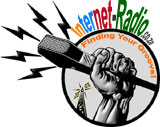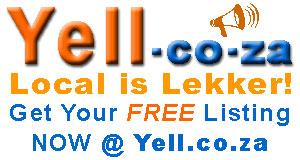To unlock the potential of digital, some radio broadcasters are looking beyond their airwaves and formats, and building digital destinations that stand apart from their core radio businesses. Such efforts include hyper-local news websites, online restaurant and travel guides, e-newsletters and local event listings.
In Asheville, NC, for instance, Saga Communications recently launched the828.com, a website supplying area residents with information on local food, entertainment and events. The site has a link to its four sister radio stations’ contests and live streams, but it isn’t an obvious promotional platform for Saga’s radio cluster. Saga COO Warren Lada says the idea for the828.com came from staffers in the Asheville cluster and represents a way to connect with long-time residents in the fast-growing market.
Similarly, in Clarksville, TN, Saga’s cluster created a digital newspaper, ClarksvilleNow.com, which specializes in local news and information. The website stands as its own business, although Lada said some clients buy both digital inventory and on-air spots.
“We are local people with local interests doing local things. This will bring in local dollars outside of radio,” Lada told Inside Radio recently. He says the best ideas come from the local level. “We leave it up to the markets to ascertain what will work and then we support them any way that we can.”
While some local digital endeavors, like Saga’s, link back to sister radio stations and may make use of broadcasters’ local connections with audiences and advertisers, many of these new businesses stand alone. Such efforts are part of an industry-wide push to grow digital revenue amid a slower-than-expected over-the-air advertising market.
At Townsquare Media, websites that are separate from its radio stations are a centerpiece of the company’s portfolio and Townsquare operates more than a dozen such national websites. Some, such as Taste of Country or PopCrush, are music-related and connect to Townsquare events and music festivals, while others center on pop culture and celebrity news, like JustJared.com. The national sites feed content to Townsquare’s local radio station websites and also take content from local sites to push to their larger audience, according to executive VP and chief content & digital officer Bill Wilson.
To satisfy local demands, Townsquare has also built some hyper-local sites, such as a local sports website, the East Texas Sports Network, in Tyler, TX, and a news site, the Hudson Valley Post, in the Hudson Valley region of New York State. “We have launched community websites in many of our markets where we saw an opportunity given the local market need was not being met,” Wilson said recently.
Such moves are a “very smart play,” said Gordon Borrell, CEO of station consultancy Borrell Associates. “You have leverage out from your brand and to some extent migrate and create new brands,” he said. “Too many media companies are looking at the opportunities in digital media as a product extension as opposed to a new business. Look at it as a new program, format or section and leverage existing resources to do that.
“I really like to see companies branch out and do something beyond their brand and basic skill set in digital media,” Borrell added.
Digital Grows As a Station’s Revenue Segment
Digital represents a small, but fast-growing segment of the radio industry. Radio stations’ digital revenues are poised to surge 22% this year, growing to a record $753 million, according to research released jointly by the Radio Advertising Bureau and Borrell Associates. Digital ad sales growth averaged 12% for radio stations, and small markets recorded much higher growth rates for digital sales—between 36% and 83%.
A new digital business doesn’t have to be a website; it could be an app, a service or an e-newsletter. CBS Radio New York, for one, recently launched an email newsletter dubbed “FOMO,” short for “fear of missing out” that gives a daily preview of major events and news in the New York area. “This is a first-of-its-kind local email newsletter specifically targeting next generation news and information consumers,” Marc Rayfield, senior VP/market manager told Inside Radio recently.
Curated by CBS Radio New York staffers, the newsletter includes news and information from CBS Radio stations, CBS TV stations and area news outlets such as The New York Times and Time Out New York. At launch, the email went out to more than 75,000 registered users in the CBS New York database and “We expect that to grow exponentially as we begin to brand and promote across other CBS Radio over-the-air and online assets,” Rayfield said.
Each edition of the “FOMO” newsletter is exclusively sponsored by a client and Rayfield says CBS Radio is exploring ways to involve other advertisers, including through native content and contests. The newsletter could serve as a model for other CBS Radio markets as well.
While some new web businesses are generated in-house—as was the case for CBS Radio’s FOMO and Saga’s Asheville website—other broadcasters are building a stable of web properties through acquisitions. Minority media company Urban One, for instance, recently acquired Moguldom Media Group and added black celebrity news website Bossip.com, black women’s site MadameNoire.com and HipHopWired.com to its assets. Now called BHM Media, the popular websites give Urban One established digital brands and access to a digital audience, and the sites can also feed content to the company’s radio stations and their websites. Similarly, Salem Media Group operates a news website, townhall.com, which exchanges content with Salem’s news and talk stations, but operates as an independent brand.
At the local level, as radio executives bat around ideas to grow digital dollars, Gordon Borrell says they should consider popular verticals or niches that also have a local hook. “Every market is known for something, whether it is something grown there or an aspect of tourism. Those are the opportunities to develop something that is inherent and exclusive to your region,” he said.
From there, Borrell says, local broadcasters have an advantage: “You use the promotional capabilities of your radio station to build up that entity.”












